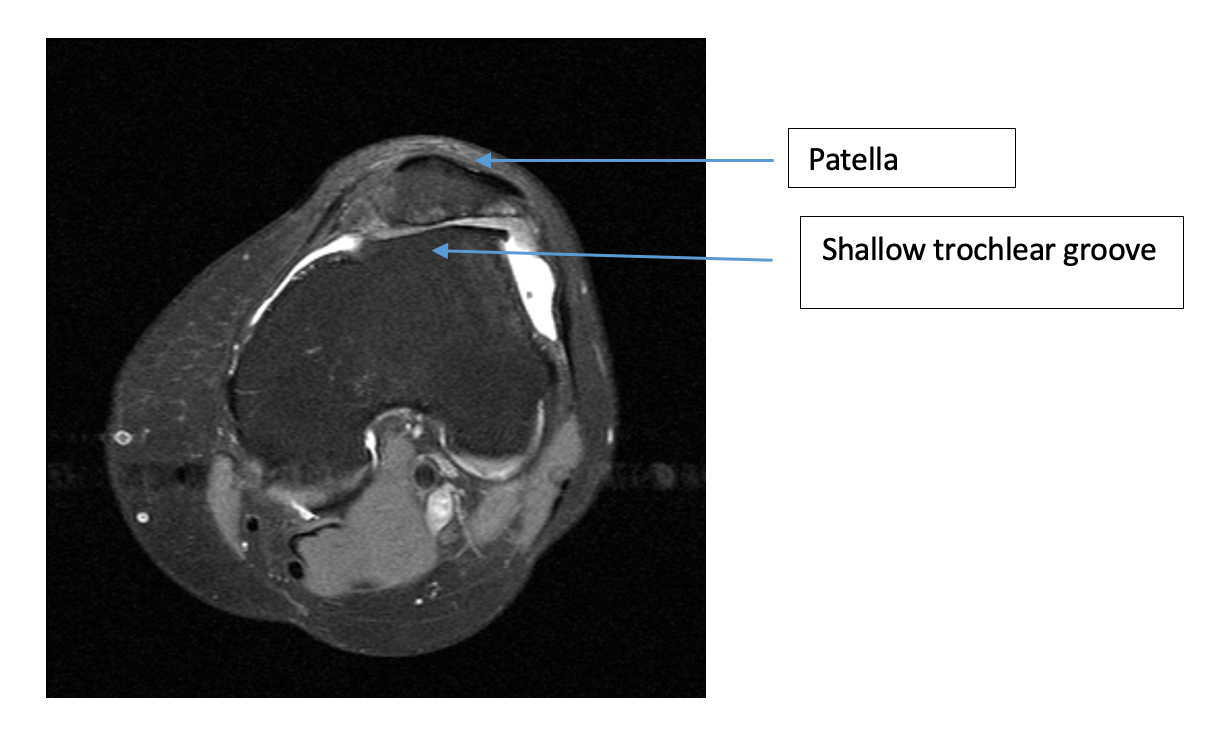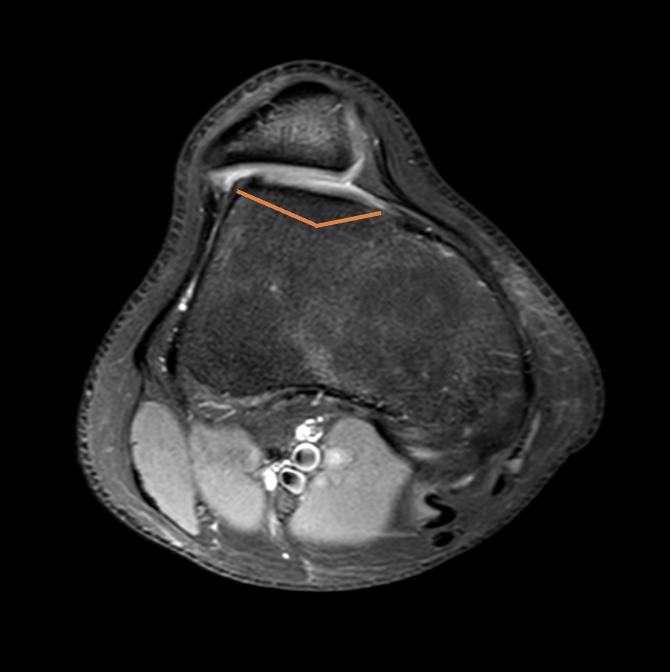
What is the trochlear groove?
The trochlear groove is the groove at the front of the thighbone in which the kneecap glides as you bend and straighten the knee. It helps to stabilise the kneecap, so the deeper the trochlear groove, the harder it is for the kneecap to dislocate. If you have a shallow or flat groove it is a lot easier for your kneecap to dislocate.
What is trochlear dysplasia?
Trochlear dysplasia was first described in 1802. Trochlear dysplasia means the groove is shallow or flat. It is something you are born with and can be inherited from your parents. Your knees will both have the same shape of trochlear groove so if it is flat on one side, it will be the same on the other knee.
How common is trochlear dysplasia?
Trochlear dysplasia is common in people with unstable kneecaps and about 85% of patients with recurrently unstable kneecaps have a flattened groove. With a flat groove it is a lot easier for the kneecap to dislocate.
What is a trochleoplasty?
A trochleoplasty aims to deepen the groove. A thin amount of bone is taken away from underneath your groove to allow a flap to be formed and pushed down to deepen the groove.
Do I need a trochleoplasty?
The main indication for trochleoplasty is two or more patellar dislocations, or one patellar dislocation with persistent apprehension for more than one year in the presence of severe trochlear dysplasia. Severe dysplasia is defined radiologically as a high grade trochlear dysplasia (type B to D) on CT scan.
Depending on your anatomy, a trochleoplasty may be the only procedure needed during your operation. More commonly in more complex cases, other operations such as MPFL reconstruction, tibial tubercle osteotomy or distal femoral osteotomy are also needed.
If you have severe arthritic change then a trochleoplasty is not suitable for you and other operations will be discussed.


Can you do this operation arthroscopically (keyhole surgery)?
Current guidance from NICE (National Institute for Health and Care Evidence) is that there is not enough evidence to support the efficacy of performing an arthroscopic trochleoplasty. Following this guidance I do a trochleoplasty through an incision on the front of the knee to allow me to see the shape of the groove and correct it.
https://www.nice.org.uk/guidance/ipg474/chapter/1-Recommendations
Will it work?
The current studies show that most patients are satisfied with the outcome, do not have any further dislocations and their kneecap feels more stable. 85% of patients are still satisfied 7 years after surgery. However, most studies looking at success rates do not have a long follow up.
What are the risks and complications?
Some patients still complain of pain after surgery and there are not enough studies on long term outcome to say whether trochleoplasty has an effect on the risk of developing arthritis later on in life.
It is likely that the amount of cartilage damage found at the time of surgery may influence the risk of developing arthritis and some studies have shown 30% of patients have arthritic change at long term follow up. What we do not know is how many of these would have developed arthritis anyway without surgery.
The complications common to any surgery include scarring, numbness around the scar, infection, thrombus (or clots in the veins).
Specific known risks for this surgery include arthritis, stiffness, dislocation and pain.
Possible risks include the bone flaps not healing or the cartilage of the bone flaps being damaged but these have not been reported in studies to date.


How long will I be in hospital for?
The operation requires a couple of nights in hospital as it is painful. Physiotherapists will help to get you moving and independently doing stairs before you go home. You will be full weight bearing. If you need a tibial tubercle osteotomy as well then you will be in a brace, if not then you are allowed to move your knee without restriction.
How long do I need off work?
Give yourself at least two weeks off work to recover.
How long before I can drive?
This varies between patients but by 6 weeks you may be back to driving.
When can I go back to sports?
It can take up to 9 months to go back to sports, depending on which operations you have had and how fit you are before your surgery
